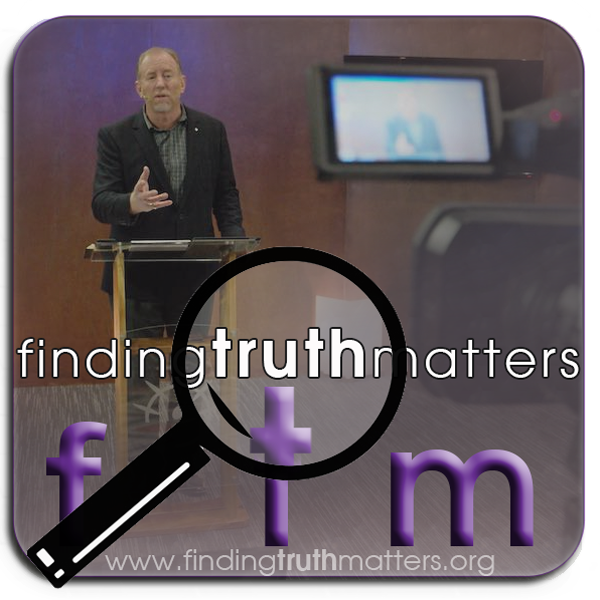home > articles > Why Euthanasia Can Never Be Dignified
Uncle Max was my favourite uncle. He loved tennis. I loved tennis. He loved books. I loved books. As a young boy I was often sent to my Aunt and Uncle Max’s place for the school holidays. This was the time when I discovered tennis history. I learned of the great Harry Hopman, Frank Sedgman, Ken Rosewall, Lew Hoad, Margaret Smith and Roy Emmerson. I revered places like Kooyong, Flushing Meadows, Roland Garros, and Wimbledon entirely due to my uncle and his library. But then later something happened.
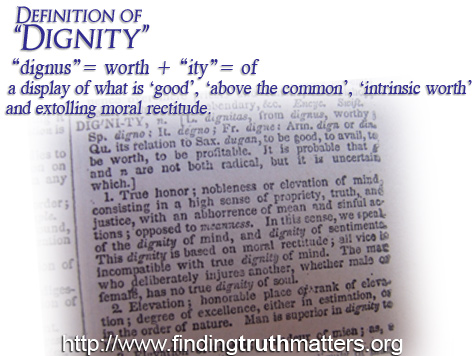
My outdoor sports loving uncle developed skin cancer. It was devastating. I spent time with him at his hospice bedside as he endured the pain and faced a certain end. I witnessed my dying uncle display great dignity in the midst of his anguish. Since that time, after becoming a pastor, I have had over the past two decades the sacred privilege of being at the deathbed of many other dignified people. I also make a regular monthly visit to a local nursing home where I see the frail and elderly who can no longer control their bodies as they once used to. Yet these people are still of great worth, which is what the word “dignity” means. Therefore, the deliberate ending of a human life is to denegrate this intrinsic worth and thus actually rob a person of dignity. The claim that euthanasia enables someone to die with dignity is wrong on two levels. Firstly, humans have dignity because of the imago dei. Thus, while we can treat a person with dignity we can not do anything to give dignity to a person. Secondly, the testimony of the vast majority of those who care for the terminally ill is that their patients all die with great dignity. For example, at a recent public meeting in Launceston, Tasmania, Dr Paul Dunn stated that he works with approx 360 dying patients each year. He has been practicing Palliative Care for the past 20 years and he has never seen a patient die an agonising death (due to medication). He told the gathering that “dying with dignity is about facing death with courage”.
Those who advocate for legalised euthanasia (from a combination of Greek words, “eu”= ‘good’ + “thanatos”= ‘death’) argue that people experiencing “intolerable pain” should be helped to “die with dignity”. In an interview I conducted recently with a leading senior medical practitioner, I asked him about the concept of “intolerable pain”.
Resistance to pain killers (opiates) is very uncommon, but it does occur. I have personally never seen it. What is much more common is intolerance to pain killers, especially nausea and vomiting, which when continuous and unremitting is as bad as or worse than chronic severe pain.
M.D. Anon.
He went on to explain to me that when opiates become ineffective and further treatment is pointless, medical doctors revert to injectable Phenobarbital 300mg. This helps their dying patient to find relief in the final stages. This is fairly standard medical practice. It is documented and forms a part of the hospital’s patient records. Yet some pro-euthanasia advocates claim that this is euthanasia by stealth, and that the public has not got “the faintest idea of what happens behind closed doors when doctors help people to die.“
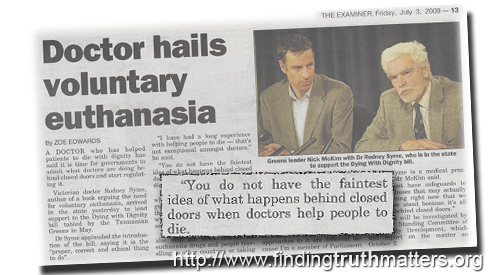
A prominent euthanasia advocate, former Australian Governor General Bill Hayden, was reported saying to a conference of physicians in 1995 that some people become ‘useless’ to society and are therefore an ‘unproductive burden’ on that society-
‘there is a point when the succeeding generations deserve to be disencumbered – to coin a clumsy word – of some unproductive burdens’
The Hon. Governor General Bill Hayden, address to the Royal College of Physicians, 21st June 1995, Brisbane Courier Mail, 26th June 1995
It appears that the strongest drivers of the push to introduce legalised euthanasia are not the terminally ill but others who consider these vulnerable and incapacitated lives to be undignified (“without worth”). In fact, where euthanasia has been legalised it has generally not been the terminally ill who have asked for their lives to be prematurely ended. For example, in Holland where Voluntary Euthanasia has been legalised-
“An old man was dying from disseminated lung cancer. His symptoms were well controlled and he asked if he could go and die at home. When his four children were told about his wish, they would not agree to take care of him. Instead, they pointed to their father’s suffering and the need to finish things quickly ‘in the name of humanity’. When the doctor refused, they threatened to sue him. As the patient insisted on going home, a social worker went to investigate. She discovered that the patient’s house was empty and that every piece of furniture had been taken by the family.“
R. Twycross, “Journal of the Royal Society of Medicine”, Feb.1996, pp.61-63
WHAT IS “EUTHANASIA”?
Euthanasia is acting upon the deliberate intention to prematurely end a person’s life. For this reason, it is also referred to as “Assisted Suicide”. There are two primary categories of Euthanasia and within each category there are two sub-categories. The primary category of euthanasia is distinguished as either (i) Active, or (ii) Passive. The sub-category is distinguished as either (i) Voluntary or (ii) Involuntary. Thus we have four general categories of euthanasia. They may each be summarised as-
1. ACTIVE VOLUNTARY EUTHANASIA |
A person willingly chooses to die and acts to carry out this choice. What distinguishes this from suicide is the assistance of another. |
2. ACTIVE INVOLUNTARY EUTHANASIA |
A person unwilling to have their life taken from them is deliberately terminated by another. |
| 3. PASSIVE VOLUNTARY EUTHANASIA | A dying person declines medical assistance which would prevent them from dying. |
| 4. PASSIVE INVOLUNTARY EUTHANASIA | A dying person who could be medically prevented from dying is denied this life-saving treatment. |
Ethically, there is no objection to #3 when the possible treatment itself is pointless. While circumstances may have to be considered in evaluating #4 to determine it is ethical or not, we can consider the first two categories of euthanasia as unethical. Dr JP Moreland sees another category by distinguishing “Involuntary” Euthanasia (even though a person refuses, their life is terminated) from “Non-voluntary” (where a person has neither consented nor refused, perhaps due to incapability, and has their life terminated anyway). Thus, J.P. Moreland extends the categories of Euthanasia to six categories-
This distinction combines with the active/passive distinction to form six different types of euthanasia: voluntary active, voluntary passive, nonvoluntary active, nonvoluntary passive, involuntary active, and involuntary passive.
Dr J.P. Moreland, article DE197-1 from the Christian Research Journal
An appeal is often made by those advocating euthanasia that only euthanasia offers a “dignified” way to end the pain of a dying person. They claim that this position of ending a person’s pain is “compassion”. This is a cunning distortion of language. Compassion means with another in their pain (“com”= with + “passion”= painful suffering).
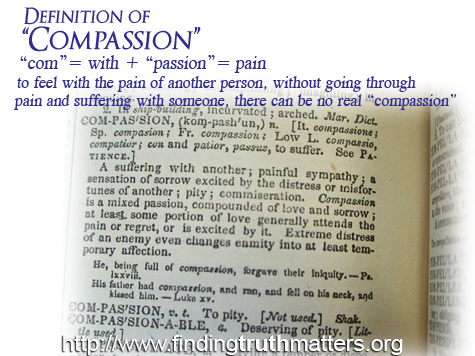 To kill someone to halt their pain, is therefore not compassion. To provide relief, care, love, support and acceptance to someone who is enduring near intolerable pain is true compassion. This is called ‘Palliative Care’. Those who work in Palliative Care witness people displaying great dignity as they share their pain and suffering.
To kill someone to halt their pain, is therefore not compassion. To provide relief, care, love, support and acceptance to someone who is enduring near intolerable pain is true compassion. This is called ‘Palliative Care’. Those who work in Palliative Care witness people displaying great dignity as they share their pain and suffering.
Christians have a long tradition of caring for the suffering. This is not just because the Scriptures forbid the unjustified taking of an innocent human’s life (the 6th Commandment) but also because the Scriptures teach that mankind uniquely bears the image of God. Human life is fundamentally different to any other.
When a doctor administers morphine for pain relief or Phenobarbital 300mg, this is not euthanasia. What advocates of euthanasia ideally want is the right to administer a lethal injection in the same form as is given where capital punishment is adminstered by courts to those sentenced to die by lethal injection.
With euthanasia, by contrast, if you give a lethal injection to a patient and she keeps living, you give another and another until she is dead. Euthanasia is intentional killing.
Dr David van Gend, Queensland M.D.
This hardly fits the picture of “dying with dignity”! The International Task Force On Euthanasia reports that many initial attempts to euthanase a patient are unsuccessful and sometimes result in increased agony from uncontrollable vomiting, severe shortness of breathe, and acute convulsions. Again, this is hardly ‘dignified‘.
Where “Voluntary Euthanasia” has been introduced, the legislated ‘safeguards’ have failed.
In Oregon, of the 49 patients who died by physician-assisted suicide in 2007 not a single patient was referred for psychiatric assessment prior to taking their lethal drug. Not one.
State of Oregon Official Data on Referrals to Psychiatrists
In Holland where ‘Voluntary Euthanasia’ has been legalised –
This [official] data shows that, year after year, doctors euthanase around a thousand patients without any explicit request – even where, on the doctors’ own admission, many of those patients were competent to give or withhold consent if asked.
Onwuteaka-Phillipson B, van der Heide A, et al, Euthanasia and other end-of-life decisions in the Netherlands in 1990, 1995 and 2001, Lancet 2003; 362: 395-99.
Empirical evidence clearly shows that ‘safeguards’ built into any Euthanasia legislation simply do not prohibit the very things it claims to prevent.
HUMAN LIFE IS UNIQUE
The Bible reveals to us that after God created all non-human life, He then especially created humans. But even more importantly, God declared that He created mankind in His image. In Latin this is referred to as imago dei – the image of God. Only mankind bears the imago dei. This means that mankind is uniquely endowed with –
- An immortal (not eternal, since it is created) soul that defines our life (James 2:26)
- Self-consciousness, we can ponder our own existence
- Moral sensitivity with the ability to be altruistic and heroic
- Aesthetic appreciation that admires and is captivated by beauty
- Spiritual hunger that manifests in transcendent (beyond this dimension) worship
- Curiosity about the past and the future
- A need for intimate relationship especially with God
Before the Mosaic Law declared Thou shalt not murder, God had decreed the intentional taking of another human’s life as a violent attack against the image bearers of God. Chuck Colson ponders this-
I heard a magnificent sermon recently by Dr. Tim Keller, pastor of Redeemer Presbyterian Church in New York. He makes this point powerfully in a sermon called “In the Image of God.” With great eloquence, Keller talked about what it means to be created in God’s image and its implications for the way we live.
Because we are created in the image of God, human life is sacred. We have value, worth, and dignity. Science by itself doesn’t give us any basis for that view. So when a society loses its belief in God, it starts to believe that humans are only valuable based upon their “capacities”—and then you get views like those of Dr. Peter Singer of Princeton, who believes that some human lives have no value and deserve no protection…The whole civil rights movement sprang from a biblical worldview. It’s not just a tradition in Western thought, Dr. Keller reminds us. Even “Aristotle said some races are born to be slaves.” But the Bible tells us in Genesis that humans are accountable for each other’s lives, precisely because God created us in His image.
Chuck Colson, Breakpoint, “In His Image” (The Roots of Social Justice), June 17, 2009
Because we are created in the image of God and are endowed with these unique attributes and have inherent dignity (“elevated worth”) because of that image we bear, we see that intentionally killing another human being is forbidden by God.
The Tasmanian Greens acknowledge that the Christian position is intrinsically opposed to their Dying With Dignity Bill 2009 because life is a sacred gift from God. In their submission guide they correctly state-
“Religious beliefs that God alone gives and takes life are to be respected. But in a secular, multi-faith society this belief should not be enforced in law.”
But this is a self-refuting ‘argument’ since they have not advocated why their religious views drawn from secularism should be enshrined in law above those with other religious views who regard life as sacred.
Greg Koukl, who hosts Stand To Reason, an American syndicated talk-back radio program on the issues of religion, values and ethics, called, had the following conversation with a caller about euthanasia-
Me [Koukl]: You believe that euthanasia should be allowed because it eases the psychological or physical suffering of a person. Is that correct?
Him [Caller]: Yes.
Me: I object because I believe that life is a gift from God and we must answer to Him for how we use our life. Therefore, we don’t have the liberty to take our life; it’s not ours to take.
Him: You’re inappropriately bringing religion into the issue because my views are otherwise.
Me: Yes. Can I ask you a question? Does belief about an afterlife qualify as a religious belief?
Him: Yes.
Me: Do you believe in an afterlife?
Him: I’m not sure. I think that there probably is life after death but I’m not sure what it entails.
Me: But you do have a belief about the afterlife whatever it happens to be?
Him: Yes.
Me: Do you believe in hell? In other words, is there a hell in the afterlife, a place of eternal punishment?
Him: No, I don’t believe in that.
Me: So beliefs about the afterlife are religious beliefs. And you have a belief about the afterlife which excludes the belief of hell. Therefore, you have a religious belief about the afterlife. Is that correct?
Him: Well, if you put it that way I guess I’d have to agree.
Me: There’s nothing clever about the way I put it, it just seems to naturally follow from the comments you made.
Him: Okay.
Me: So you have a religious conviction that there is no hell. Could you be wrong?
Him: I guess it’s within the realm of possibility.
Me: You don’t know for sure, do you?
Him: No, who can?
Me: Okay, that makes my point. You could be wrong about this.
Him: Yes, I could.
Me: If you are wrong and there is a hell, euthanasia could be sending a suffering person, not to peace and rest, but to an even greater suffering in hell. Theoretically that’s possible, isn’t it?
Him: Yes.
Me: But look for a moment at what you have done. You have faulted me for espousing a particular position against euthanasia because it necessarily entails a religious belief that cannot be, at least in your mind, adequately justified or proven. But your position on euthanasia involves the exact same kind of assumptions about the afterlife that are necessarily religiously based and, at least at this point of the discussion, are equally unprovable by you
Him: I see what you’re getting at.
Me: In other words, it seems that it’s impossible to avoid the intrusion of religious views on either side of this issue. So it’s not a matter of one party in this discussion forcing his religious view on another. It’s a matter of two competing religious views, isn’t it? So you’d have to admit that your attack on my position as being a merely religious imposition is an unfair attack, because both of our positions qualify as religious positions, and both positions advocate incumbency. In other words, both try to “force” their views on others who disagree.
©1998 Gregory Koukl. Reproduction permitted for non-commercial use only. For more information, contact Stand to Reason at 1438 East 33rd St., Signal Hill, CA 90755 (800) 2-REASON (562) 595-7333 www.str.org
TRUE COMPASSION & REAL DIGNITY NEEDED
Recent medical breakthroughs have enabled the prolonging of human life. In 1900 in Australia the average life expectancy for a male was 53 years. By 1990 this was 73 years. (“Changes In Life Expectancy”, by Kevin G. Kinsella, available http://www.ajcn.org/cgi/reprint/55/6/1196S.pdf) This can result in greater strain on hospitals and medical resources and the unforeseen spiralling medical costs for families affected. But the answer to these challenges is not euthanasia. When physicians administer morphine or Phenobarbital 300mg they are doing so to relieve their suffering patients and may hasten their end. But this is not euthanasia. Despite the claims of some pro-euthanasia doctors, it doesn’t need regulating because it is regulated. When someone is intolerably suffering and others wait on them they are showing true compassion. When someone loses control of their body functions we shouldn’t think of them as worthless. Rather, it is at this time that we show them how much they are valued. This is true dignity.
Euthanasia is an attempt to curse the darkness of human misery. Palliative Care on the other hand is lighting a candle in the midst of that same darkness.
|
ARGUMENTS FOR VOLUNTARY EUTHANASIA |
ARGUMENTS FOR PALLIATIVE CARE |
|
* Individuals have the right to end their life as they choose |
* “No man is an island…for whom does the bell toll? It tolls for me.” No one has the justified right to deprive society of one of its members, including the individual. |
|
* People have a right to avoid an undignified death |
* Loss of bodily functions does not mean that a person is now a “burden on others”, or undeserving of respect and care. Dignity is about the inherent and priceless worth that every person uniquely has by virtue of being human. |
|
* It is a dire lack of compassion to allow someone to suffer intolerable pain |
* Intolerable pain is extremely rare, it is treated with opiates (such as morphine) and then eventually Phenobarb 300mg. This level of pain relief is administered where further treatment has become pointless. Such pain-relief treatment implements the “Law of Double Affect”. |
|
* Doctors are currently covertly euthanasing patients now and this places them in legal uncertainty and vulnerable to criminal charges. |
* Doctors openly apply the Law of Double Affect with the intention of relieving their patient’s pain, suffering, and discomfort. This pain management strategy is not done “secretly” or “covertly” but is available for review on official patient medical records. |
|
* Some terminally-ill patients suffer the added stress of feeling that they are a burden, emotionally and financially, upon their families and friends and should therefore have the right to relieve them of this burden through euthanasia. |
* Those who have often been parents where they cared for their dependents for many years should not be made to feel that they are a burden upon their families and friends. On the contrary, this is a time to honour and value them. |
|
* It is a dire lack of compassion toward someone who voluntarily chooses to die by medical euthanasia yet feels distressed when a Government jurisdiction is unduly prohibiting them from doing so. |
* ‘Distress’ should never be the grounds for Governments implementing exemption provisions within some of the most basic laws that enshrine some of the most basic human rights. |
|
* Euthanasia should be considered ethically or morally neutral because we each determine what is right or wrong for ourselves. |
* Unnecessarily taking a human life is not ethically or morally neutral. Just as we are all endowed with certain unalienable human rights we are also bound by certain universal morals which makes the unnecessary taking of a human life immoral. |
In Tasmania we seem to continually face a relentless push by a few to introduce voluntary euthanasia. This is how the Hobart Mercury reported this news-
The Australian state of Tasmania is to debate euthanasia. The leader of the Greens Party, Nick McKim, has tabled a bill which will be debated in August or September. All parties have given their members a conscience vote on the issue. Mr McKim believes that the bill will pass the lower house, but foresees a battle in the upper house.
A local palliative care specialist, Dr Paul Dunne, spoke forcefully against the bill. He says that the experience of dying is a valuable one which families treasure. “It is hard, but the value that I see regularly is that families that have lost communication often gain communication again,” Dr Dunne said. “It is one of the remaining rituals that we have in our society because that person lying in the bed is very powerful in bringing families together.”
Legalised euthanasia would result in a “throw-away society”, he claimed. “As a society we’re going to lose a hell of a lot of wisdom, that ability to grieve properly and live properly… It is really treating life like a commodity. That would be dangerous. There are a number of people who feel they are a burden to their families and there are some families that, for whatever reason, feel that a sick person is a burden to them. So there will be an issue of pressure, sometimes direct and sometimes subtle.”
The Hobart Mercury, Mercury, May 26, 2009
We commend the Hobart Mercury for presenting Dr Paul Dunne’s response to the Tasmanian Greens Political Party Leader. Dr Dunne makes a good case for yet again rejecting this undignified Bill (as the Tasmanian Parliament has done on three previous occasions). It is our hope that the Tasmanian Parliament, and any other Parliament, will promote true compassion and true dignity all the while cherishing the value of human life by once again rejecting this push to legalise euthanasia.
© Dr Andrew Corbett, July 8th 2009, writing from Legana, Tasmania, Australia
Helpful Links-
THE INTERNATIONAL TASK FORCE ON EUTHANASIA
Religion & Euthanasia by Greg Koukl
CRI Article: THE EUTHANASIA DEBATE, Understanding the Issues, Part 1, by Dr JP Moreland
CRI Articles: THE EUTHANASIA DEBATE, Assessing the Options, Part 2, by Dr JP Moreland
-
Sale!
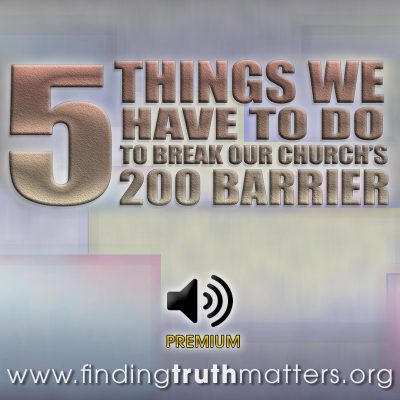
5 Things We Need To Do To Break Our Church’s 200 Barrier, Premium Audio
Original price was: $1.75.$0.95Current price is: $0.95. -
Sale!

A Morning With Izaak Walton – The Compleat Man, Premium Audio
Original price was: $1.75.$1.25Current price is: $1.25. -
Sale!
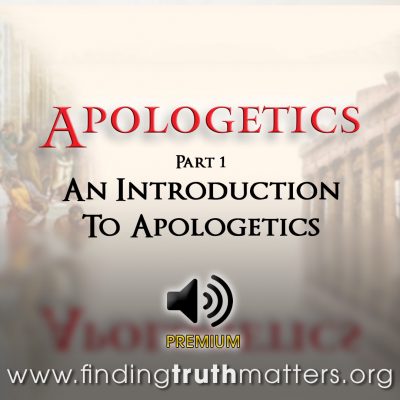
Apologetics Part 1 – Introduction To Apologetics, Premium Audio
Original price was: $1.75.$0.95Current price is: $0.95. -
Sale!
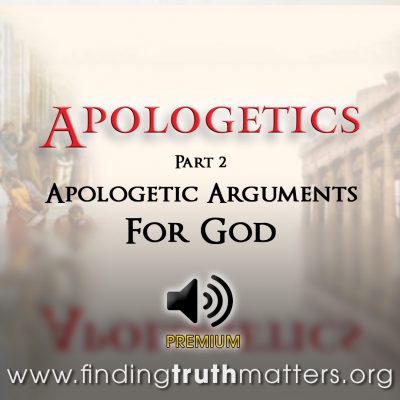
Apologetics Part 2 – The Apologetic Arguments For God, Premium Audio
Original price was: $1.75.$0.95Current price is: $0.95. -
Sale!
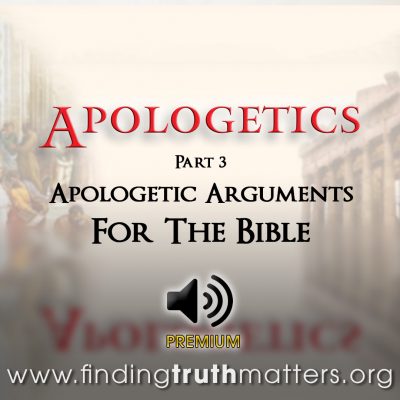
Apologetics Part 3 – The Apologetic Arguments For The Bible, Premium Audio
Original price was: $1.75.$0.95Current price is: $0.95. -
Sale!
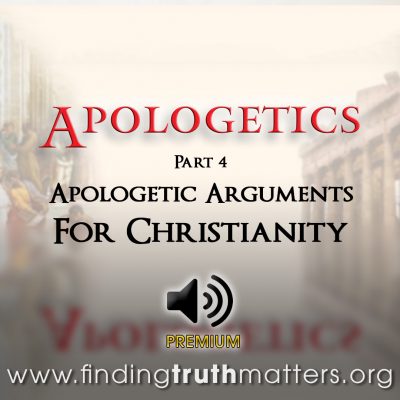
Apologetics Part 4 – The Apologetic Arguments For Christianity, Premium Audio
Original price was: $1.75.$0.95Current price is: $0.95. -
Sale!
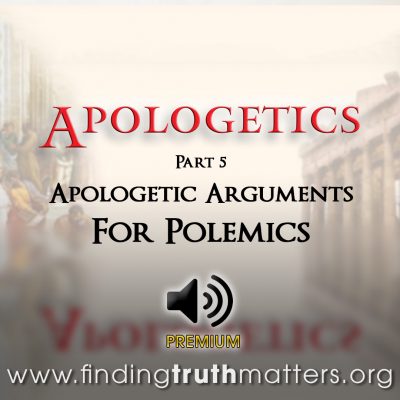
Apologetics Part 5 – The Apologetic Arguments For Polemics, Premium Audio
Original price was: $1.75.$0.95Current price is: $0.95.
Articles
Read articles about ethics, apologetics, philosophy, public policy discussions here
Audio Archives
Listen to or download hundreds of teaching audios. Search by categories, topics and Scripture passages.
Teaching Videos
View hundreds of teaching videos here. Invite a ‘virtual’ guest speaker by using these videos.
Free Resources
Choose from hundreds of Printable, free, and downloadable, Bible Studies, and Sermon Powerpoints/Keynotes.
